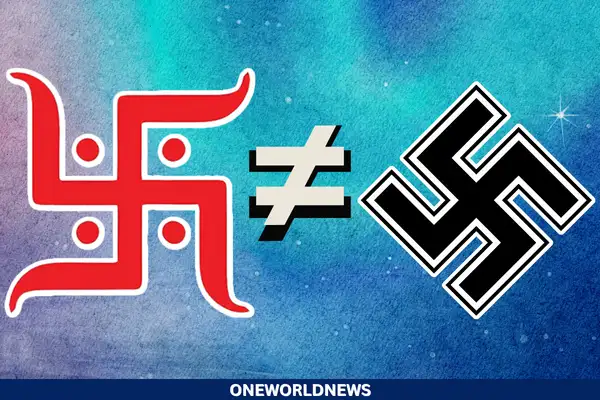The Misrepresentation of Indian Symbol of ‘Swastika’ in the Western Culture

How the Indian Symbol of ‘Swastika’ has been associated with Nazism
The Indian symbol of ‘Swastika‘ is an equilateral cross with bent arms. It is a religious symbol that most Indians are familiar with. Mostly painted in red and splashed across temple walls, floors, or even buildings- the Swastika has been a part of Indian culture for ages. The ritualistic aspect of Swastika is still relevant and respected in Hindu Dharma. But, the misuse of Swastika in Western Culture is a painful reminder of how misappropriation of history always harms the sentiments of one group.
Dear @netflix, your new show #KALEIDOSCOPE (episode yellow; time 10:30) is equating holy Swastika to Nazism
This is factually INCORRECT & HINDUPHOBIC to the core.
Nazi symbol is HAKENKREUZ and NOT SWASTIKA. pic.twitter.com/KRtZYUSHoB
— Aniket Kandge (@AussieBhakt) January 7, 2023
What is Swastika?
The word Swastika comes from the Sanskrit roots- su (meaning ‘good’) and asti (meaning ‘to prevail’). It is a symbol of hope, goodness and well- being. In Hindu philosophy, the four equilateral cubes of the Swastika also represents the four cycles, life stages, and the four Vedas.
What is Hakenkreuz?
If one were to Google the word Hakenkreuz, it reads, “a symbol in the form of a hooked cross with four equal arms bent clockwise at a right angle, used as the emblem of the German Nazi party.”
The misuse of ‘Swastika’
It was the Hooked Cross or Hakenkreuz that was the representation of nazi power, but post World War 2, the association of Swastika and Hooked Cross was such that the Swastika inevitably became the symbol of Nazism. There were attempts in 2007 to ban this ‘Swastika’ symbol in Europe as it represented the atrocities meted by Hitler. Several Hindus opposed this blatant misuse of their cultural symbol.
In recent years there has been an awareness among people, thanks to the vocal support of many, that Swastika is not the same as Hakenkreuz. In 2022, Australia recommended a ban on ‘Hakenkreuz’ and differentiated it from the Indian ‘Swastika’. It also allowed the use of ‘Swastika’, a religious symbol, by Hindus.
There is a need to correct this prevalent misunderstanding or misrepresentation, and for the people to disassociate the two symbols as having different origins and meanings.







